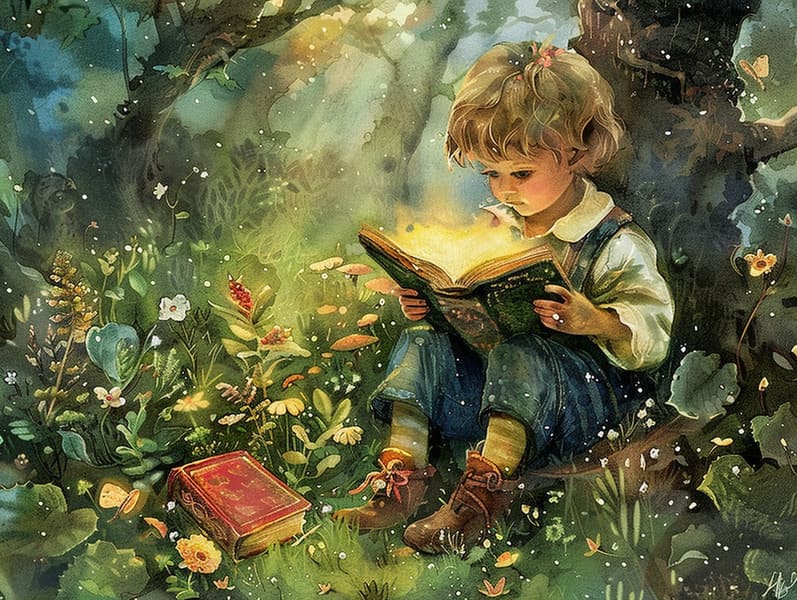
Famous fairy tales have enduring presence. These narratives have been shared from one generation to the next centuries before they were ever put on paper. They were born from a variety of traditions, including Asian traditions. They were initially shared among older generations, often carrying themes and messages related to the societal norms and beliefs of the time.
Jacob and Wilhelm Grimm, Jacob and Wilhelm, were among the first to collect and release many of these beloved fairy tales. Their collection, "Grimm's Fables," included narratives like "The Little Glass Slipper," "Little Brother and Little Sister," and "Snow White," which have since become mainstays in the world of famous fairy tales. Similarly, Andersen's fanciful stories, such as "The Little Mermaid," and "The Little Duckling," have stolen hearts worldwide, establishing their place in the pantheon of beloved fairy tales.
Though they are centuries old, these stories remain as significant as ever, especially as children's night stories. These enchanting tales are now available in numerous formats, including vividly illustrated books, delightful animations, and digital storybooks.
Their lasting appeal can be attributed to several captivating elements:
Important Morals: Old fairy tales often share important moral lessons. Narratives like "The Boy Who Cried Wolf" teach the benefit of honesty, while "The Tortoise and the Hare" exemplify the qualities of perseverance and unassuming nature. These tales offer young readers clear distinctions between correct and incorrect, guiding their moral compass in a kind yet lasting way.
Warmth and Understanding: Timeless fairy tales frequently showcase beings facing problems and hurdles, inspiring listeners to feel with their struggles and root for their triumphs. For instance, "Beauty and the Beast" highlights the value of looking deeper to appreciate the inner self of a individual, encouraging kindness and insight.
Cultural Perception: Many ancient fairy tales are saturated in the cultural contexts from which they grew. Exploring these tales can provide delightful insights into different societies, fostering a sense of world respect and comprehension.
Creativity and Imagination: The fantasy-filled elements in ancient fairy tales—supernatural elements—foster children’s visions and dreams. These stories carry readers to mythical realms, boosting imaginative ideas and a sense of awe that stays a lifetime.
Classic fairy tales are not only charming but also didactic. They provide delightful tools in fostering various mental and emotional abilities in young readers. When timeless fairy tales are voiced, they boost communication skills by presenting new phrases and intricate sentence structures. This practice also nurtures auditory skills and concentration, as young ones hang on every word, expectant to see what happens next.
Furthermore, contemplating the themes and characters of traditional fairy tales can foster analytical skills and thought processes. Young ones are taught to find patterns, expect results, and comprehend cause and effect. These talks also advance children communicate their thoughts and feelings, boosting their emotional intelligence.
In today’s technological age, the accessibility of internet fairy tales has made these narratives more available than ever. Digital sites and online apps give broad selections of ancient fairy tales that can be perused or listened through anytime, anywhere. Fairy tales recited are particularly well-liked, supplying an interactive method for young ones to appreciate these charming stories. Audio stories and read-to-me videos move characters and settings to life, often supplemented by bewitching music and songs that boost the storytelling journey.
The enduring charm of classic fairy tales lies in their ability to adjust to contemporary times while staying true to their basic principles. Contemporary retellings of these fairy tales often showcase more representative protagonists and modern settings, making them accessible to today’s audience. However, the fundamental themes of valour, warmth, and lawfulness remain unchanged, continuing to appeal to children of all ages.
Old fairy tales also offer a sense of assurance and homeliness. They confer upon a well-structured narrative with a apparent beginning, middle, and end, often wrapping up with the solving of conflicts and the triumph of virtue over wickedness. This predictability can be easing for children, presenting a sense of sturdiness in an always shifting world.
Ancient fairy tales continue to enthrall and guide new generations, maintaining their appeal and relevance in modern society. As children's bedtime stories, they disclose a perfect blend of charm and understanding, nurturing moral values, empathy, and creativity. The accessibility of digital fairy tales and the well-received status of fairy tales read aloud promise that these classic fairy tales remain accessible to new generations.
By preserving and disseminating these more info tales, we continue to appreciate the rich tapestry of creativity and cultural heritage. Whether you are exploring a vibrantly illustrated book, browsing a web collection, or listening through an narrated book, the delight of classic fairy tales is always within reach. These tales illustrate of the unceasing influence of storytelling and its ability to link us across generations and cultures.
Be it you are experiencing a colorful picture book, viewing a internet library, or listening to an read-aloud story, the appeal of Grimm's fairy tales is always within reach.
These narratives illustrate of the immortal presence of tales and its ability to link us across generations and cultures, creating a bond that enchants and educates alike.